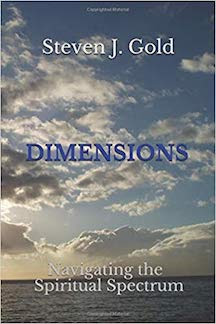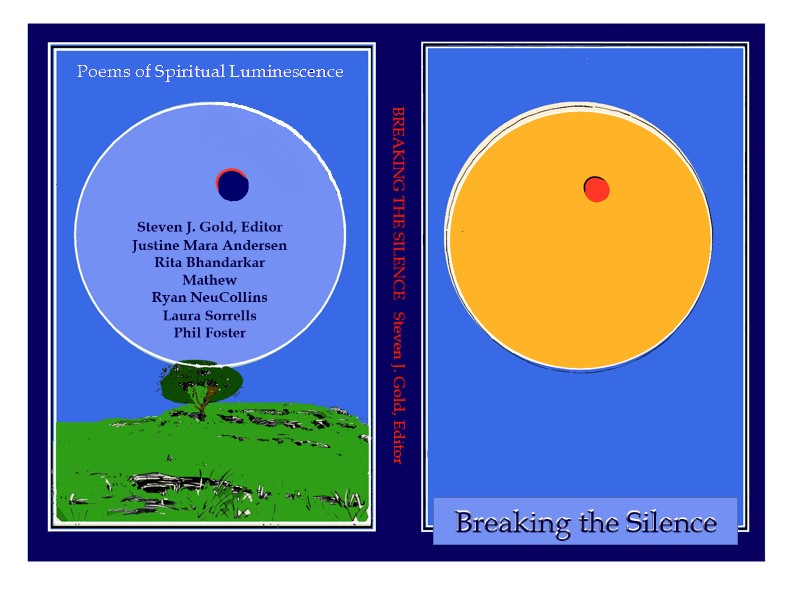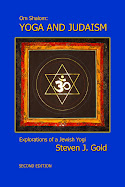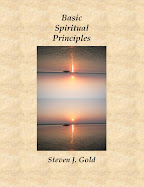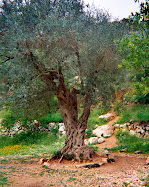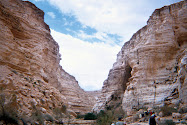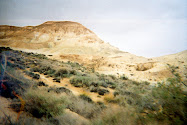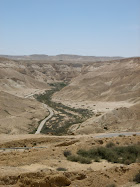Christian and Other
Trinities, Love Without An Object, Light and Darkness, Relationship and Beyond
[Opening note: Richard
Rohr is a Catholic priest who is in the vanguard of a deconstruction movement
redefining Christianity from a mystical and meditative perspective, and William
Paul Young is a Protestant minister doing likewise, and is the author of a
popular book that was recently made into a movie called “The Shack”. I sent the
below email to them care of the contact link on Richard Rohr’s website and
asked that it be forwarded to them (I could not find any contact information
for William Paul Young, although he has his own website). I received a very
nice response that my message had been received, and would be forwarded, as
requested.]
Some time ago, I was
afforded access to a webinar conducted by Richard Rohr and William Paul Young
on The Christian Trinity. I recently viewed the webinar, and had a few thoughts
I would like to share. The only way I know how to contact Richard Rohr is
through this email address. I could not find any way to contact William Paul
Young, and I am requesting that you folks who received this email forward it to
him.
One of my mentors, Rabbi
Joseph Gelberman, had a favorite little motto, “Never instead of, always in
addition to.” It is in the spirit of that motto that I share these reflections
with you.
I believe I heard Mr.
Young make a statement to the effect that love (all forms of love) requires a
relationship, something to be loved. There is a book that I never read,
although I liked the title. It is called The Philosophy of Consciousness
Without An Object by Franklin Merrill-Wolf. In keeping with the
concept expressed in this title, I submit for your consideration that the
deepest of all Love is the primal impulse of creative expression that is the
source and substance of all, that it is Love for Love’s sake, Love Without an
Object.
In the tradition of Veda
Spirituality (I use this term to refer to the vast spiritual tradition
encompassed in the Indian Sanskrit scriptures collectively referred to as Veda,
and all derivative sources, encompassing, but transcending, traditional
Hinduism), one common designation of the indivisible Non-Dual Reality that is
The Source and Substance of All is Brahman. As is the case in many
spiritual/religious traditions, despite the insistence that Brahman is One
Without Second, there is also common in this tradition a designation of
three-fold qualities of Brahman comprising its Unity, similar to how you have
described the Christian Trinity. This designation is Satchitananda (Sat-chit-ananda),
commonly translated as Being/Truth, Consciousness, and Bliss/Joy/Love. It is my
analysis that this three-fold designation indicates the first primal stirrings
of manifestation/creation from the dimension of transcendence into the
dimension of immanence. An impulse from the dimension of all-encompassing Being
generates the most subtle all-encompassing Consciousness. An impulse from
Consciousness likewise generates Bliss/Joy/Love, from which emanates the
primal stirrings of creation/manifestation, culminating in the relative world
as we commonly know it. Again, I submit for your consideration that the Love at
this level does not require a relationship, something to love, because it is
the Source of relativity/relationship, but is beyond it at the same time.
Mr. Young also made a
statement found in many spiritual traditions, including the Veda tradition,
something to the following effect: “Where there is light, there can be no
darkness. Light dispels darkness.” We can get into all kinds of philosophical
musings on the metaphorical meaning of light and darkness, e.g., light
represents truth/knowledge, darkness represents untruth/ignorance. However, I
believe it is important to view certain positive aspects to darkness and
re-think these matters. In the tradition of Torah Spirituality (I use this term
to refer to the vast spiritual tradition encompassed in the Jewish Hebrew
scriptures and all derivative sources, collectively referred to as “Torah”,
encompassing, but also transcending, traditional Judaism), there is a concept
that darkness is not merely the absence of light, but is itself a positive
presence/substance that is not necessarily dispelled by light, but can co-exist
with light. Jewish mystical teachings point to several Bible incidents
involving this substance of darkness: when Abraham engaged in the Covenant
Between the Parts, the plague of darkness inflicted on the Egyptians, and the
column of darkness that led the Israelites during their Exodus travels during
the day, replaced by a column of fire by night. There is also the darkness that
descended upon Mt. Sinai when God directly addressed the multitudes that had
just emerged from Egypt.
In addition, the opening
lines of Genesis lead to an interesting conclusion about darkness and light,
found in correlates in Jewish mystical teachings.
As narrated in Genesis,
prior to light, darkness existed. There is a distinct sequence that is then
described: first, God brought light into being, and next, God
separated light from darkness. This indicates there was a period, no matter how
brief, in which light and darkness co-existed, as if light had been infused
into the darkness, resulting in a state in which diffused light existed amidst
the darkness. It is not until a separate and distinct step when God “separated
between the light and the darkness”, apparently separating and concentrating
the prior diffused light, thus creating night (when darkness is prevalent) and
day (when light is prevalent). It is interesting to note at this juncture that
the terms “night” and “day” and “evening” and “morning” are used, even though
the sun has not yet been created. But that is a discussion for another day!
There is no indication in
these verses that light dispelled darkness. Quite the contrary, there are
indications that darkness remained. This is supported by Jewish mystical
teachings encompassing its version of a primordial Trinity: Ein, Ein Soph, and
Ein Soph Aur (referred to in the Western Esoteric Tradition as The Ring Cosmos,
The Ring Chaos, and The Ring Pass Not). As with my analysis of the Vedic
Trinity, this appears to be another example of designating the One through the
Many (at least three), and describing a sequence by which creation/manifestation
occurs. Ein is Nothingness beyond description. Ein Soph expresses the concept
that Nothingness is not actually void, but only appears to be void because it
is the state of pure potentiality, with nothing yet manifest (like a fallow
field that has a bunch of seeds planted below the surface, but no growth has
yet broken through). It is therefore Everythingness in potential. This
correlates to concepts of “World Without End” – if all that exists is Eternity
and Infinity, there isn’t room for anything else. It is only the partial
contraction of Eternity and Infinity that allows for Time and Space, and thus
relative existence as we know it, to exist. Ein Soph Aur is the Everythingness
of Ein Soph infused with diffused light (when God uttered “let there be
light”), but before God separated the light from the darkness. The separation
of the light from the darkness sets the stage for the rest of manifestation/creation
to ensue and correlates to the “Big Bang” of physics.
There are other examples
of light and darkness co-existing without one cancelling out the other. Just
look up at a clear night sky, and what do you see? You see a vast darkness with
pinpricks of light that we know are distant stars and planets. The darkness and
the light co-exist. And what does our modern science tell us about dark holes
and dark matter? It tells us that what we regard as the light-emitting visible
universe is only a small part of the totality of what actually exists, against
a backdrop of vast dark holes (that are sucking up light, not being canceled
out by light) and dark matter. One last simple example: if you closely examine
a simple candle flame in a still room, you will note that the flame is blue at
its base (reminiscent of the sapphire base of the throne of God depicted in
scripture), followed by a tongue of darkness around the wick, next followed by
the yellow/orange glow of the upper flame. Again, we find darkness amidst the
light. The Chinese ying-yang symbol of the Tao is a nice image portraying this
co-existence of dark and light, indicating that even where one is prevalent,
some of the other still exists.
Mr. Young made a statement
something to the effect that “there is only relationship”. That is something I
have pondered for quite a while. And I agree that in the world of relativity in
which we generally find ourselves functioning, that is an important and
profound truth. As long as we have any sense of a self separate from others,
then all that exists is relationship, and it would appear that one of our
important tasks is to examine the nature of our relationships with everything
else, to fit together the pieces of the puzzle that is our life. And neither
the puzzle nor the relationships are necessarily fixed, but are dynamic and
changing, creating a bigger challenge to understand life generally and our
specific relationships within life. However, I think it important to
qualify/counter this approach with a spiritual viewpoint that a connection with
the Unity that is beyond relativity and relationship also needs to provide us
with guidance and a deep spiritual perspective.
Finally, I wanted to
express my deep appreciation and connection with Mr. Young’s brief description
of God the Father that he chose to use in his novel, The Shack. I have
had profound inner encounters with the Divine Mother as a big, black,
African-American type of female. His description thus struck a deep chord in
me.
Whoever ends up reading
this, thank you for your indulgence. I hope you see fit to pass it on to Mr.
Rohr and Mr. Young.
Om Shalom,
02/25/17

